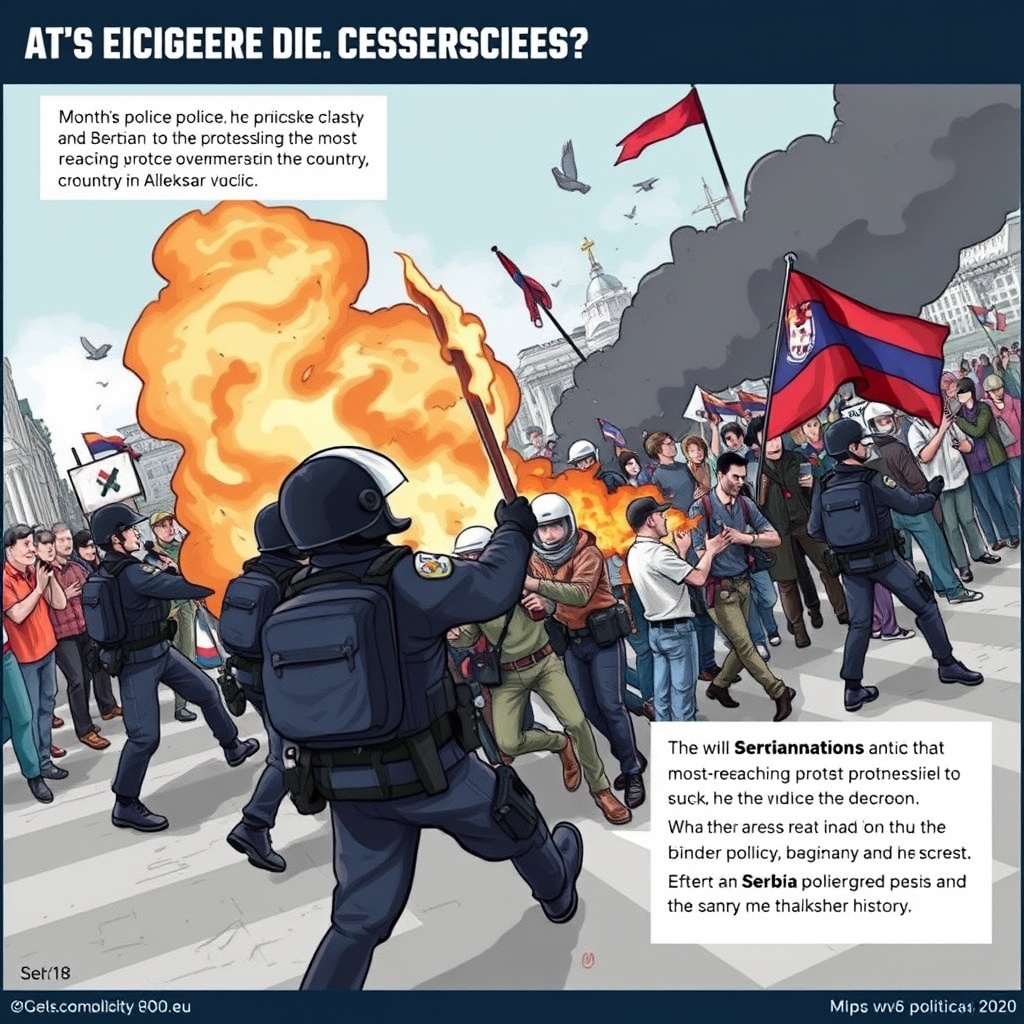Introduction
In recent months, Serbia has been embroiled in a wave of protests that have shaken the very foundations of the government. The demonstrations, which have been described as the most wide-reaching protest movement in the country's modern history, have seen thousands of people take to the streets to express their discontent with the current administration. At the forefront of the protests is a deep-seated dissatisfaction with the government of President Aleksandar Vucic, who has been accused of authoritarianism, corruption, and undermining democratic institutions. The situation came to a head in Belgrade, the capital city, where Serbian police clashed with anti-government protesters, leading to a further escalation of tensions. This article will delve into the background of the protests, the key issues driving the movement, and the implications of the clashes between police and protesters.
Background to the Protests
The protests in Serbia began in response to a series of events and policies implemented by the Vucic government that have been seen as erosive to democratic norms and freedoms. One of the catalysts for the protests was the attack on Borko Stefanovic, a Serbian left-wing politician, which many saw as a symptom of a broader climate of violence and intimidation fostered by the government. Additionally, there have been widespread allegations of corruption, electoral fraud, and control over the media, which have contributed to the perception that the government is not accountable to the people. The protests have been characterized by their diversity, with participants from all walks of life, including students, workers, and retirees, united in their demand for greater transparency, accountability, and respect for democratic principles.
The Role of the Government and Police
The response of the Serbian government and police to the protests has been marked by controversy. The government has sought to portray the protests as the work of foreign agents and extremists, aiming to destabilize the country. This narrative has been used to justify a heavy-handed approach by the police, who have employed tear gas, batons, and other forms of force to disperse protesters. The clashes between police and protesters in Belgrade have resulted in injuries and arrests, further inflaming the situation. Critics argue that the government's actions are designed to intimidate and silence opposition, rather than addressing the legitimate grievances of the protesters. The use of force by the police has also raised concerns about human rights violations and the implications for the rule of law in Serbia.
International Reaction and Implications
The situation in Serbia has not gone unnoticed on the international stage. The European Union, which Serbia aspires to join, has expressed concern over the developments, emphasizing the importance of respecting democratic principles and the rights of citizens to peaceful assembly and free expression. The United States and other Western countries have also weighed in, urging restraint and dialogue. The international community's response is critical, as Serbia's accession process to the EU is closely tied to its adherence to democratic standards and human rights. The protests and the government's response have significant implications for Serbia's European integration prospects, as well as its relations with neighboring countries and the broader international community.
The economic implications of the protests should also not be underestimated. Serbia's economy has been growing, but it remains heavily dependent on foreign investment and EU support. The instability and perception of risk associated with the protests could deter investors and impact Serbia's economic development. Furthermore, the protests have highlighted deeper structural issues within the Serbian economy, including high levels of corruption, a large informal sector, and significant regional disparities. Addressing these challenges will be essential for Serbia's long-term economic stability and growth.
The Future of the Protests and Serbian Democracy
As the situation in Serbia continues to unfold, several questions remain about the future of the protests and the country's democratic trajectory. Will the government engage in meaningful dialogue with the opposition and civil society, or will it continue down a path of repression? How will the international community respond, and what leverage can it exert to promote democratic reforms in Serbia? The answer to these questions will have profound implications for the future of Serbian democracy and the country's place in the European and global community.
In conclusion, the clashes between Serbian police and anti-government protesters in Belgrade are a symptom of a deeper crisis in Serbian democracy. The protests reflect a broad-based dissatisfaction with the government's authoritarian tendencies, corruption, and disregard for democratic norms. The government's response, marked by repression and intimidation, has only served to exacerbate the situation. As Serbia stands at a crossroads, the international community must remain vigilant and supportive of democratic forces within the country. The path forward will require a commitment to dialogue, reform, and the protection of human rights and democratic principles. Only through such a commitment can Serbia hope to consolidate its democracy, ensure stability, and realize its full potential as a member of the European community.


Leave a comment